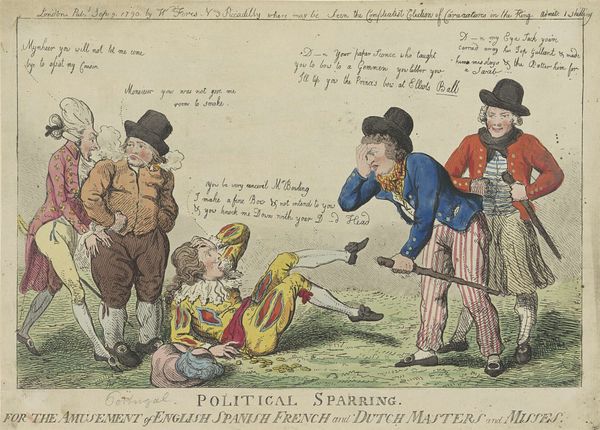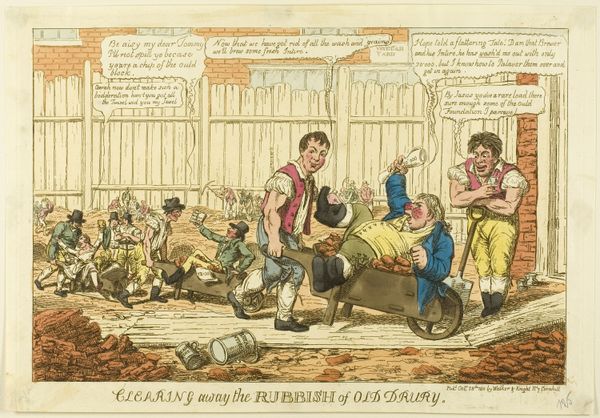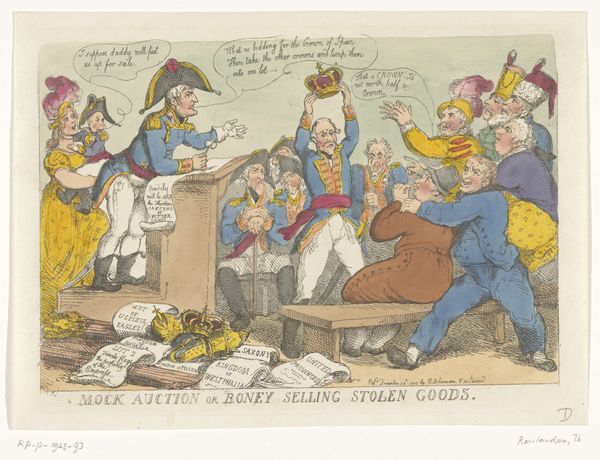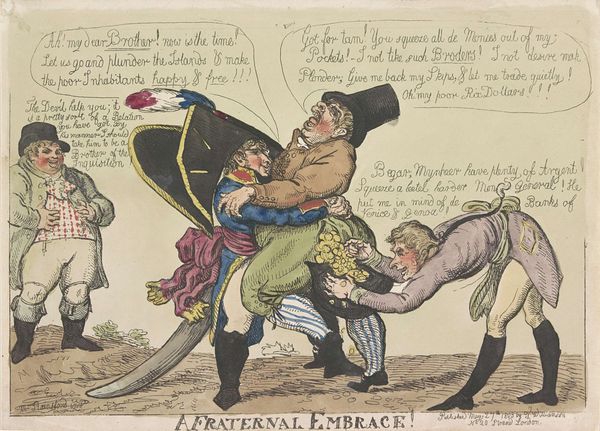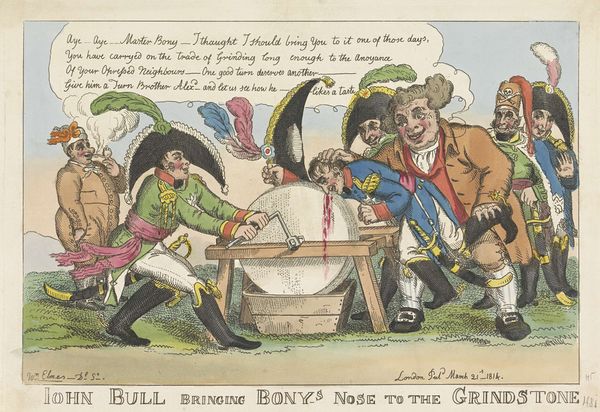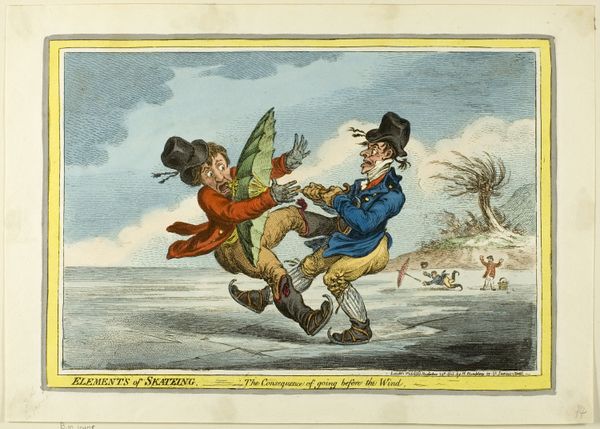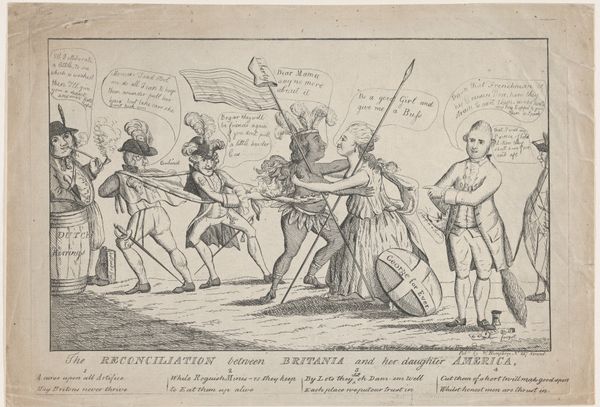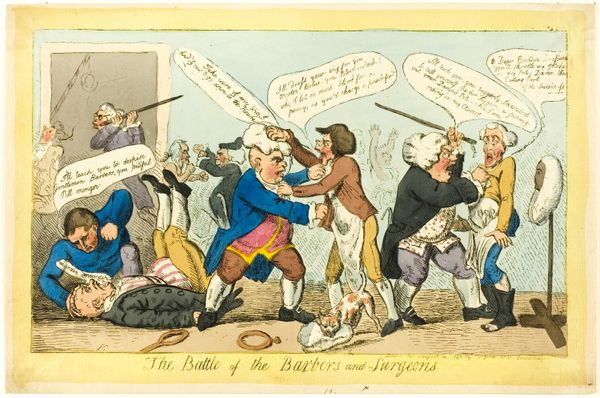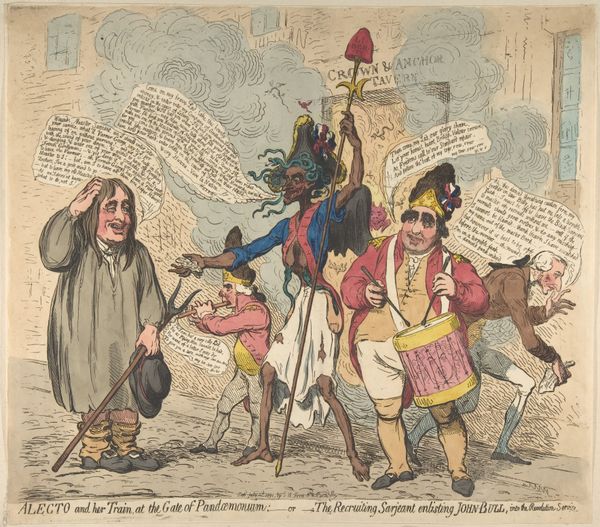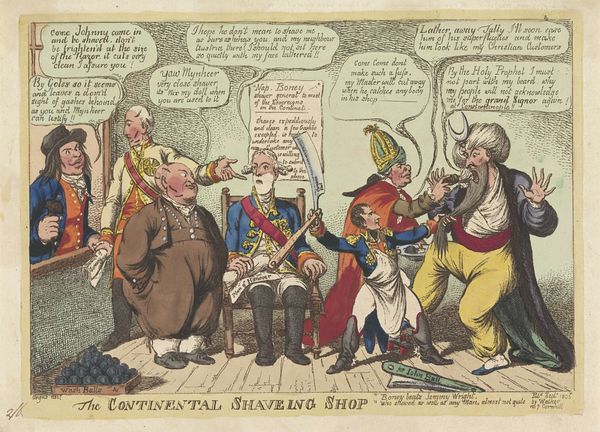
Spotprent op de capitulatie van de Bataafse vloot in de Saldanhabaai, 1796 1796
0:00
0:00
print, watercolor
#
narrative-art
# print
#
caricature
#
watercolor
#
romanticism
#
watercolour illustration
#
cartoon carciture
Dimensions: height 250 mm, width 350 mm
Copyright: Rijks Museum: Open Domain
Curator: We're looking at "Spotprent op de capitulatie van de Bataafse vloot in de Saldanhabaai, 1796," created by Isaac Cruikshank. This watercolor print is housed right here at the Rijksmuseum. Editor: Immediately, I'm struck by its rather biting satirical tone. It feels very pointed in its ridicule of the Dutch. The color palette is muted but the exaggerated features of the figures amplify the message, whatever that may be. Curator: It’s a caricature commenting on the Batavian Republic's fleet's surrender at Saldanha Bay. Cruikshank uses distortion to convey a strong message here. Notice how the figures representing Britain and France flank a bloated Dutchman, gold coins spilling from his pockets. The composition seems to intentionally position him as squeezed between these two powerful forces. Editor: Right. So, we see Britain, characterized as John Bull, and France represented symbolically, robbing this Dutch figure. It's an overt statement about the Netherlands being politically and economically vulnerable between these larger empires during the revolutionary period, caught in the crossfire of larger geopolitical strategies. The cartoon relies on popular prejudices for its effect. The monkeys chained to a palm on the left even seem to reflect a colonial power structure being lampooned here. Curator: The loose watercolor technique enhances the immediacy of the political message, but also detracts a bit from finer detailing. We do get an indication of perspective in the architectural details. Editor: It is provocative, but the composition does a superb job highlighting the inherent tensions between national identity and political alliances and colonial exploitation during times of revolution and societal reformation. Its symbolic language communicates anxieties around power that still echo loudly today. Curator: It allows us to view through a specific, historical lens the struggles with which smaller nations dealt during such a transitional epoch. The artist shows us both what happened but also why, with symbolism giving context to actions otherwise lost to time. Editor: Absolutely. These prints acted as visual articulations of propaganda, helping shape public opinion and fueling nationalistic sentiments during times of conflict. The romantic era of revolution in full bloom.
Comments
No comments
Be the first to comment and join the conversation on the ultimate creative platform.
